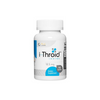New website, same quality supplements & vitamins! Share feedback

The Vitamin Guide to Skincare

Buying products with the fanciest packaging and the highest price tag may seem like the safest and easiest option in your quest to reclaim your youthful appearance. But, trust us, natural skincare using vitamin-based products has amazing benefits that not even the best chemical-based products can offer. Buying non-natural products can be much like buying processed food: It may taste and look better, but on the inside it is doing irreparable harm to your body.
There is a better way.
The truth is that everything that you need to rejuvenate, replenish, and revitalize your skin has been provided by nature, and vitamins are the wellspring of that goodness. Read on to discover the hidden powers that vitamins have to rejuvenate and replenish your skin.
Treating Your Skin Right
The largest organ in, or should we say on, your body is your skin. Its main function is as a barrier for the body to keep toxins at bay. Of course, when looked after, it can also look great, projecting to the world that we are fit, healthy, and ready to take on anything. In this article you’ll discover the most important vitamins that your skin needs to work optimally while retaining its youthful glow.
In scientific terms, vitamins are essential to your body. That means that the body cannot synthesize them by itself; you have to ingest them from outside the body. You can do this either by way of the foods you eat, by supplementation, or by applying a vitamin cream directly to the skin.
Read on to discover the key vitamins to nourish and restore your skin.

(Also Known as: The Anti-Ager)

Overview of What It Does to the Body:
Rather than referring to one particular vitamin, the classification Vitamin A refers to a group of related nutrients known as retinoids. We can get Vitamin A into our body through animal sources, such as through fish, eggs, fish liver oil, and dairy products. However, our bodies are also able to manufacture Vitamin A from beta-carotene, found in dark green leafy, and deep yellow and orange vegetables, and fruits.
What Does Vitamin A Do to the Skin?
Vitamin A is the only chemical that is able to fully reprogram cells. It thickens the dermis, which is surrounded by your collagen, elastin, and blood vessels. This effectively reduces wrinkles and increases the amount of blood flow to the surface of the skin. Vitamin A raises the amount of collagen (the main protein found in connective tissue) in the process, slowing its breakdown .
Vitamin A normalizes blood flow and helps reduce blood vessel enlargement, which is what gives the cheeks and nose a flushed look (rosacea).
Vitamin A has also been clinically proven to:
- Increase the speed of wound healing
- Exfoliate the skin
- Reduce brown spots and pigmentation
- Be an effective treatment for acne
- Improve surrounding hydration levels and the hydration levels in the cells
- Have powerful antioxidant properties
Toxicity to Vitamin A can occur if a person overdoses on this vitamin. Symptoms of Vitamin A toxicity include:
- Irritation
- Redness
- Sun sensitivity
- Dry spots

The best way to begin a Vitamin A supplementation program is to slowly build up the skin and body’s tolerance to the vitamin. This involves starting off by using small product amounts every other night and eating foods that contain Vitamin A. Just be wary that you don’t overdose on Vitamin A.

(Also Known As: The Hydrator and Redness Killer)
Overview of What It Does to the Body:

There are 8 B Vitamins. They work together to help the body convert carbohydrates into sugar. They also assist in the synthesis of proteins and fats. In addition, all 8 of the B Vitamins boost the body’s immunity. Our bodies are unable to store B Vitamins, so we must take them in through our diet every day. Of the 8 B Vitamins, it is B3, also known as niacin, that plays the key role in keeping our skin healthy.
What Does Vitamin B3 Do to the Skin?
Vitamin B3 is also known as niacin. It raises the amount of ceramide being produced and strengthens the barrier protecting the skin. This, in turn, locks in moisture, keeping out pollutants and irritants. It is also known to help with post acne pigmentation, by evening out the skin tone.
Vitamin B3 has been shown to:
- Improve skin moisturization
- Reduce the appearance of aging skin by giving the skin protection from free radical damage
- Even out the skin tone, getting rid of redness (hence the name “redness killer”)

Vitamin B3 contains anti-aging properties and helps control rosacea and acne. So, if you are dealing with rosacea or acne, or you’re just growing older, consider adding products containing vitamin B3 into your skincare routine.

(Also Known As: The Brightener and Anti-Ager)

Overview of What It Does to the Body:
Vitamin C is also called Ascorbic Acid. Our bodies require vitamin C in order to manufacture collagen, which is like the glue that keeps the human body together. Vitamin C is an important anti-oxidant which has been clinically proven to alleviate heart disease and select cancers, and even the effects of aging. Vitamin C has a powerful liver cleansing ability. It flushes out toxins and neutralizes the free radicals in the liver. It also has the capacity to lower your LDL cholesterol and triglyceride levels.
What Does Vitamin C Do to the Skin?
In any form, Vitamin C gives your skin a strong protection against antioxidants, shielding skin from those annoying molecules that cause premature aging (damaging free radicals). Most cases of free radical damage can’t be avoided, because they are in natural forms, such as sun damage, pollution, and oxygen. Studies have shown that diets high in Vitamin C lead to better skin appearance, reducing wrinkles, fine lines, and patchy coloration.
The key skincare benefits of Vitamin C are:
- Helps eliminate the appearance of brown spots and other types of sun damage
- Boosts collagen production
- Reduces inflammation and irritation
- Improves the healing speed of post breakout redness and red marks
- Raises the effectiveness of sunscreen

We highly recommend using a Vitamin C product under sunscreen in order to boost its effectiveness. Vitamin C has amazing sun protection benefits and heals the appearance of sun damage (redness, burning), giving the skin an even tone.

(Also Known As: The Mega Moisturizer)
Overview of What It Does to the Body:

Vitamin E contains tocopherols that prevent oxidative stress, which is caused by free radicals. This prevents the destruction of Vitamins A and D. It is essential for diabetics. Oxidative stress clogs up your liver and prevents blood sugar homeostasis. Vitamin E is also important to the maintenance of healthy red blood cells and muscle tissue. It also protects the lungs from pollutants and regulates the synthesis of Vitamin C and DNA.
What Does Vitamin C Do to the Skin?
Vitamin E is a powerful antioxidant. The greatest skin-related benefit of Vitamin E is how it strengthens the skin’s moisture barrier. It also helps to reduce the forming of free radicals. You often will find Vitamin E in after-sun products, because it gives the skin added protection against UV radiation.
The key skin-related benefits of Vitamin E are:
- Helps protect skin from environmental pollution
- Protects the skin against UV radiation
- Works as a wonderful moisturizer
- Contains anti-inflammatory benefits which prevent signs of premature aging, as inflammation of the skin cells is a major contributor to premature aging
- Heals wounds

Using a Vitamin E moisturizer (or serum) at night will help heal any facial wounds while you sleep, and you will wakeup with better looking skin. You can also wear under sunscreen for better sun protection on your next day under the scorching sun.
You can buy Vitamin E in capsules at a supermarket or drugstore. To make your own serum, take two capsules, use a needle to open the capsule then squeeze the oil into a bowl, add 1-2 teaspoon of olive oil. (You must add olive oil, as it makes the mixture more liquid, less sticky, and less thick.)
- The area under eyes, to lessen dark circles
- Stretch marks
- Scars
- Whole face, if you have dry skin
- Wrinkles
If you use this Vitamin E based serum at least 3 times a week, you will see amazing results!

(Also Known As: The Dark Circles Eliminator)

Overview of What It Does to the Body:
Vitamin K is an essential fat-soluble vitamin. It was discovered in the first half of the 20th century by Danish scientist Henrik Dam. It is well known in helping to prevent blood clots. In fact, the letter “K” that represents this vitamin comes from the German word for coagulation. Vitamin K requires an effectively functioning pancreas for the Vitamin K to get through to the gut. When you consume Vitamin K, it is bound to protein.
- Is a fat-soluble essential protein
- Its key function is to stop bleeding
- May help prevent bone density disease and cardiovascular disease
- Its main sources are dark and leafy green vegetables
- Its supplementation is generally not needed
What Does Vitamin K Do to the Skin?
Vitamin K is best used to reduce the appearance of dark circles and bruising. Vitamin K is one of the best means of restoring the wrinkly skin that surrounds the eyes. It does this by improving the circulation of the blood, reducing inflammation.
- Improves dark under-eye circles
- Reduces wrinkles
- Reduces bruising
- Improves skin elasticity

Dark circles under the eyes could be the result of a number of factors, including sun damage, dehydration, allergies, insomnia, pregnancy, aging and genetics. As we get older, the padding below our eyes thins out, leading to the dark coloration under our eyes. The use of Vitamin K is the best treatment for dark under eyes caused by aging. Eating foods that are high in Vitamin K such as cabbage, strawberries, spinach, broccoli, cabbage, and carrots is an effective, completely natural means of reducing the dark coloration under the eyes.
"Vitamins should be used only as supplements to the diet, not substitutes for healthy food," states Jeffrey Blumberg, Ph.D., the administrator of the antioxidant research lab at Tufts University, located in Boston. Getting the vitamins you need to replenish your skin should be done through whole food sources first. Here are the best way to do so:
- Drink green tea. Green tea is full of a lot of different vitamins and antioxidants, and is also good for you overall.
- Consume foods containing vitamins (see the list under each vitamin).







Regardless of how effective a vitamin is for your skin, too much of it is not a good thing. It’s important that you get the right vitamins in the right amounts. To help get the right amounts, the United States Institute of Medicine has published a range of guidelines.
The RDA (Recommended Dietary Allowance)and the AI (Adequate Intake) are the amounts of a vitamin or mineral you need to stay healthy and avoid nutritional deficiencies. They are tailored to women, men, and specific age groups.
The UL (Upper Intake Level) refers to the maximum amount of vitamins and minerals that you can take each day without risking toxicity, overdose, or any potentially dangerous side effects. If you take in more than the UL, you are asking for problems.
The DV (Daily Value) is the most widely known recommendation because it is the only one that shows up on food and supplement labels. It is based on a 2000 calorie per day diet and represents the quantity of a vitamin that you need to take in each day for optimum health. It is alternatively known as the Recommended Dietary (or Daily) Allowance (RDA).




